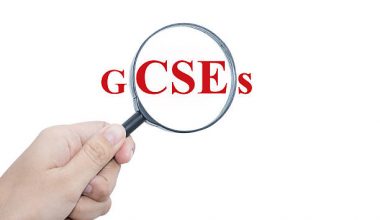If you’re a GCSE student, you’ve likely been told countless times to “learn the mark schemes.” But do you truly comprehend the significance behind this advice?
Are you aware that mark schemes and examiner’s reports can be your secret weapons for effective revision?
Examiners utilize GCSE mark schemes as a set of criteria to assign grades to students’ examination answers.
They consist of a series of descriptions outlining the prerequisites for each grade that a student must meet. Grade boundaries then determine the student’s grade.
Understanding mark schemes and examiner’s reports opens the door to self-assessment. This process allows you to appraise your work, spotlighting your areas of proficiency and uncovering your areas for improvement.
Let’s dive into the breakdown of GSCE mark schemes and examiner reports. Keep reading!
Table of contents
- GCSE Mark Schemes and Examiner Reports Overview
- How Do Mark Schemes Work in GCSE Exams?
- How do they Allocate Marks Across Different Levels in GSCE Exams?
- How Can Examiner Report Improve Exam Preparation in GSCE Exams?
- Tips for Using Mark Schemes and Examiner’s Reports
- Conclusion
- Frequently Asked Questions
- Recommendations
GCSE Mark Schemes and Examiner Reports Overview
Mark Schemes:
A mark scheme is a document by the exam board (such as AQA, Edexcel, OCR, etc.) that outlines the criteria and guidelines for awarding marks to students’ answers in GCSE exams.
It summarizes the different response levels and how they relate to the marks awarded. Mark schemes ensure consistency and fairness in marking across other examiners and exam sessions.
Key features of mark schemes include:
- Mark Allocation: The mark scheme specifies how many marks are available for each question or part of a question.
- Mark Bands or Levels: They often describe different response levels, each corresponding to a specific range of marks. These levels usually progress from basic understanding to more sophisticated analysis or evaluation.
- Criteria for Awarding Marks: The mark scheme explains what students must include in their answers to earn marks. This can involve listing key points, presenting concepts, providing examples, and demonstrating critical thinking.
- Exemplar Responses: Some mark schemes include sample answers or descriptions of the types of responses that would earn marks at different levels.
- Specific Language or Phrases: Mark schemes may include specific terms or phrases that students should use to demonstrate understanding or analysis.
Also, check out this content: GCSE Remark: All you should know in 2024
Examiner Reports:
An examiner’s report is a feedback document the exam board produces after each examination series.
It provides insights into students’ performance and highlights common strengths and weaknesses observed in the answers. Examiner reports help teachers, students, and schools understand how the exams markings went and what students generally did well or found difficult.
Key components of examiner reports include:
- Overview of Performance: The report often gives a general overview of students’ exam performance, including any notable trends or patterns.
- Common Errors: Examiner reports highlight common mistakes or misconceptions students had in their answers.
- Positive Examples: Exemplars or portions of responses are often included to illustrate firm answers.
- Advice for Improvement: The reports typically guide how students can improve their performance in future exams. This might include specific guidance on approaching certain questions or focusing on particular content areas.
- Specific Feedback: They might give feedback on specific questions or tasks that challenge students.
Both mark schemes and examiner reports play a crucial role in the assessment process of GCSE exams. They provide transparency in marking criteria, help educators understand students’ performance, and offer valuable guidance for future exam preparation. These resources are essential tools for teachers and students to enhance learning and achieve better results.
You should read: IGCSE vs GCSE: Which is Harder and Why?
How Do Mark Schemes Work in GCSE Exams?
Mark schemes play a critical role in the assessment process of GCSE (General Certificate of Secondary Education) exams by providing clear guidelines for examiners to evaluate and award marks to students’ responses.
They offer a structured framework that ensures consistency and fairness in grading across different examiners and exam sessions. Here’s how mark schemes work in GCSE exams:
1. Defining Criteria for Marks
Mark schemes outline the criteria that determine how marks are allocated for each question or part of a question. These criteria are based on the knowledge, skills, and understanding that students are to demonstrate.
2. Allocating Marks
Each question is assigned a specific number of marks, usually at the beginning of the question.
The total marks for the entire paper are also provided. Examiners refer to this allocation to decide how many marks they should award for each aspect of the answer.
Also, check out this content: What is the NMQST, and Why is it so Important?
3. Breaking Down Levels of Response
Mark schemes often include different levels of response that correspond to varying ranges of marks. These levels progress from basic understanding to more advanced analysis and evaluation. Each level describes the quality of the answer and the depth of knowledge demonstrated.
4. Criteria for Each Mark Band
Within each level of response, mark schemes detail the specific criteria that must be met to earn a particular number of marks. These criteria might include key points, explanations, examples, and relevant terminology.
5. Transparency for Students
Mark schemes also benefit students by providing insight into what examiners seek in answers. Students can review mark schemes to understand the key concepts, depth of analysis, and overall structure expected in their responses.
Check out this related content: The 15 Best GCSEs to Take (Student Opinion)
How do they Allocate Marks Across Different Levels in GSCE Exams?
They allocate marks across different levels in GCSE (General Certificate of Secondary Education) exams to reflect the varying degrees of understanding, depth of analysis, and quality of student responses.
Each level corresponds to a specific range of marks and represents a different level of proficiency in addressing the question or task. Below is a breakdown across various levels in GCSE exams:
The Level 1 (Basic Understanding):
- Marks: The lowest range of marks is allocated to Level 1 responses.
- Characteristics: Level 1 responses demonstrate a basic understanding of the topic or question. Students typically provide simple descriptions or definitions with little elaboration or analysis.
Level 2 (Limited Understanding):
- Marks: The mid-range of marks is allocated to Level 2 responses.
- Characteristics: Level 2 responses show a limited understanding of the topic and may include some relevant information. Students might provide brief explanations or simple comparisons.
Level 3 (Clear Understanding):
- Marks: The upper-mid range of marks is allocated to Level 3 responses.
- Characteristics: Level 3 responses demonstrate a clear understanding of the topic. Students provide more detailed explanations, examples, or arguments to support their points. Responses at this level may need more advanced analysis or evaluation.
You should read: When Do You Do Your GCSEs? Everything You Need to Know
The Level 4 (Good Understanding with Analysis):
- Marks: The higher range of marks is allocated to Level 4 responses.
- Characteristics: Level 4 responses indicate a good understanding of the topic with some analysis. Students offer coherent explanations and well-supported arguments and may start to consider different viewpoints or factors.
Level 5 (Strong Analysis and Evaluation):
- Marks: The highest marks within the typical grading scale are allocated to Level 5 responses.
- Characteristics: Level 5 responses showcase robust analysis and evaluation. Students demonstrate an in-depth understanding of the topic and provide well-structured arguments backed by evidence and examples. They critically assess different perspectives and demonstrate a capacity for independent thought.
Level 6 (Sophisticated Analysis and Evaluation):
- Marks: Sometimes, a Level 6 or higher level may be specified, indicating exceptional performance.
- Characteristics: At this level, responses exhibit sophisticated analysis and evaluation. Students provide nuanced and insightful interpretations, consider complex factors, and offer well-reasoned judgments. Their answers often demonstrate a high level of critical thinking and depth of understanding.
Check out this related content: What is a Pass Grade at GCSE and A Level?
How Can Examiner Report Improve Exam Preparation in GSCE Exams?
Examiner reports are invaluable resources that significantly enhance exam preparation for GCSE (General Certificate of Secondary Education) exams. These reports offer insights into how students performed in previous exam sessions, highlight common mistakes, and guide how to improve.
Here’s how examiner reports can be used effectively to enhance exam preparation:
1. Identifying Common Errors and Weaknesses
Examiner reports often highlight recurring mistakes made by students in previous exams. Reviewing these errors allows you to identify potential pitfalls and areas where students commonly struggle. This knowledge helps you focus your preparation on addressing these specific weaknesses.
2. Tailoring Study Material
Based on the feedback in examiner reports, you can customize your study material to concentrate on the topics or concepts students have historically found challenging. This targeted approach ensures that you allocate your time and effort efficiently.
Also, check out this content: How Many GCSEs Do Students Take? 2024 Complete Guide
3. Understanding Command Words
Examiner reports often discuss how students interpreted and responded to different command words (e.g., “describe,” “explain,” “evaluate”). By studying these discussions, you can better understand how to approach questions and meet the specific requirements of each command word.
4. Learning from Exemplar Responses
Examiner reports sometimes include excerpts from exemplary student responses. Analyzing these examples helps you understand the level of detail, structure, and content expected in high-scoring answers. This insight can guide your writing during the exam.
5. Time Management Strategies
Examiner reports may comment on students’ time management challenges. By learning from others’ experiences, you can develop effective time management strategies to ensure you allocate sufficient time to each question and section of the exam.
Also, check out this content: 10 Smart Questions to Ask on a College Tour | Act Smart
Tips for Using Mark Schemes and Examiner’s Reports
Using mark schemes and examiner’s reports effectively can significantly benefit your exam preparation and understanding of the assessment process. Here are some tips for making the most of these resources:
Mark Schemes:
- Read Carefully: Before attempting practice questions, thoroughly read the mark scheme for the specific exam paper. Understand how marks are allocated and the criteria for different levels of response.
- Analyze Structure: Pay attention to the structure of the mark scheme. It often breaks down the question into key points or components for which you can earn marks. Make sure to address each of these points in your answer.
- Practice Regularly: Practice answering questions and comparing your responses to the mark scheme. This will help you understand the expectations and improve your ability to meet them.
- Self-Assessment: After attempting a question, self-assess your answer using the mark scheme. Identify which points you should have addressed more fully. This helps you recognize areas where you need improvement.
- Learn from Mistakes: When you make mistakes, review the mark scheme to understand why your answer didn’t earn full marks. Use this feedback to avoid similar errors in the future.
- Understand Command Words: Different command words (e.g., “describe,” “explain,” “evaluate”) require different levels of response. The mark scheme often clarifies what’s expected for each command word.
Check out this related content: GCSEs or GCSE’s: Which is Correct and Why?
Examiner’s Reports:
- Review Weaknesses: Read the examiner’s reports for the specific exam papers you practiced. Focus on areas where students commonly struggled. This can help you target your study efforts.
- Identify Trends: Look for patterns and trends in the feedback. If many students had difficulty with a particular question or concept, it’s likely worth extra attention in your studies.
- Positive Examples: Pay attention to the exemplar responses or portions of responses provided in the examiner’s report. Understand what makes these answers strong and incorporate similar strategies in your writing.
- Time Management: Examiner reports sometimes mention issues related to time management. Use this feedback to allocate your time more effectively during the actual exam.
- Apply Feedback: As you practice more questions, incorporate the advice and feedback from the examiner’s reports. This helps you avoid common pitfalls and improve your overall performance.
- Ask Questions: If you need help to understand a comment or feedback in the examiner’s report, ask your teacher or a knowledgeable peer for clarification.
Remember that both mark schemes and examiner’s reports are valuable tools for enhancing your exam preparation. They provide insights into the examiners’ expectations, common mistakes to avoid, and strategies for achieving higher marks. Incorporating these resources into your study routine can lead to more effective learning and better exam results.
Also, check out this content: What is the Difference Between GCSEs & IGCSEs?
Conclusion
Mark schemes outline the criteria and expectations for earning marks across different response levels. They offer students a clear understanding of what examiners seek in their answers, helping them tailor their responses strategically.
On the other hand, examiner reports provide a retrospective glance at past exam performances, illuminating common pitfalls and highlighting areas for improvement.
With these resources, students can navigate the complexities of exam preparation with greater confidence and precision.
You should read: When Do You Do Your Year 11 GCSE Mock Exams in 2024?
Frequently Asked Questions
Mark schemes in GCSE exams are documents created by exam boards that outline the criteria for awarding marks to students’ responses. They break down the levels of response, command words, and specific points required for understanding and analysis.
Mark schemes provide clear guidelines on what examiners are looking for in responses. Students can tailor their answers to meet specific requirements by studying mark schemes, enhancing their chances of earning higher marks.
Examiner reports offer insights into students’ performance in previous exam sessions. They highlight common errors, analyze trends, and provide feedback on areas that students struggle with. Exemplar responses and time management advice may also be included.
Examiner reports help students identify common mistakes, develop targeted study strategies, understand command words, and learn from exemplar responses. By applying the insights from these reports, students can refine their approach and enhance their overall performance.
Yes, mark schemes and examiner reports are valuable resources for teachers. Mark schemes guide instruction and curriculum development, while examiner reports offer insights into students’ challenges and strengths, enabling educators to refine their teaching strategies.
References
- edumentors.co.uk– GCSE mark schemes and examiners report
- qualifications.pearson.com– GCSE mark schemes and examiners report
- wjec.co.uk– GCSE mark schemes and examiners report






